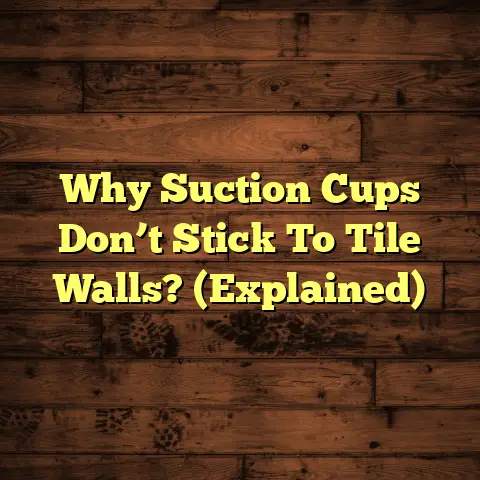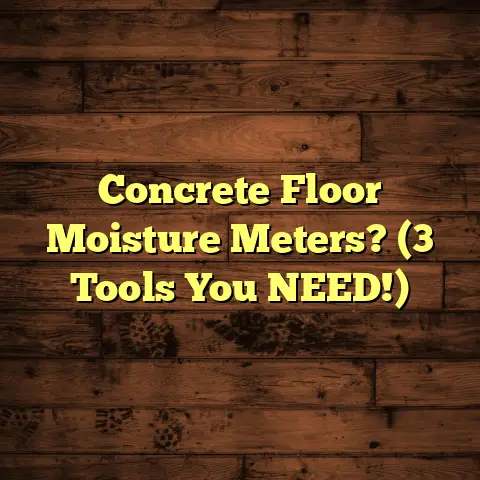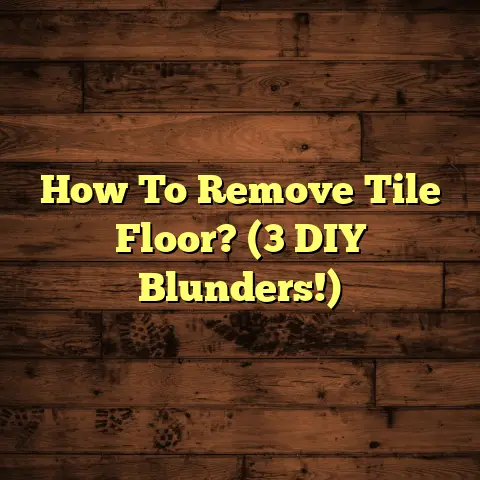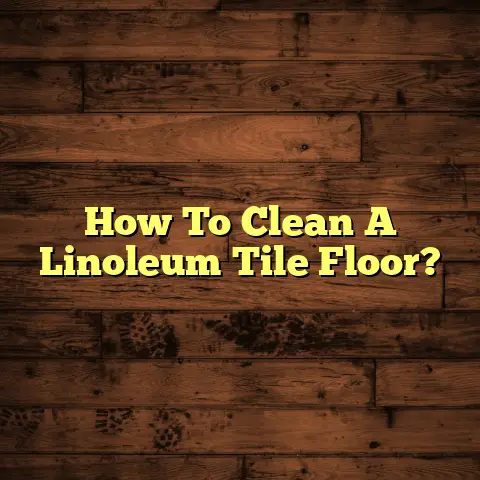Does Flooring Add Value? (1 Secret To Resale!)
Picture this: A cozy living room, sunlight streaming through the windows, kids building a fort out of blankets and pillows. Laughter echoes, a dog barks happily, and someone’s probably spilled juice on the floor.
Ah, the beautiful chaos of family life! Our homes are more than just buildings; they’re the backdrops for our most cherished memories, the stages for our daily dramas, and the safe havens where we raise our families.
And what’s underfoot during all of this? The flooring! It’s the silent partner in all these adventures. For families with children, flooring is especially crucial. It needs to be safe for little feet, durable enough to withstand spills and messes, and comfortable enough for playtime.
I’ve seen countless families struggle with flooring choices, and I’m here to tell you it doesn’t have to be a headache.
So, does flooring add value to a home? Absolutely! But here’s the secret: It’s not just about having any flooring; it’s about choosing the right flooring. And that’s especially true when you’re thinking about resale.
Section 1: The Role of Flooring in Family Homes
When it comes to family homes, flooring isn’t a one-size-fits-all situation. There’s a whole world of materials to choose from, each with its own pros and cons:
-
Hardwood: Classic, beautiful, and generally increases home value. But it can be prone to scratches and water damage, which isn’t ideal for families with young kids.
-
Laminate: A more affordable alternative to hardwood. It’s durable and easy to clean, but it doesn’t have the same warmth and feel as real wood.
-
Tile: Perfect for kitchens and bathrooms, where moisture is a concern. It’s also incredibly durable, but it can be cold and hard underfoot.
-
Carpet: Soft, warm, and cozy – great for bedrooms and playrooms. But it can be a magnet for stains and allergens, so it requires regular cleaning.
I remember one family I worked with who had three young children and a dog. They originally had beautiful, but delicate, hardwood floors. After one too many juice spills and dog-related accidents, they were ready to tear their hair out!
We ended up installing luxury vinyl plank (LVP) flooring throughout the main living areas. It gave them the look of hardwood, but it was waterproof, scratch-resistant, and incredibly easy to clean.
The parents were thrilled, and the kids could play without them constantly worrying about damaging the floors.
Flooring impacts daily life in so many ways. It affects the way a room looks, the way it feels, and how easy it is to maintain.
Think about it: Durable, easy-to-clean flooring can make a huge difference in a busy family home.
Section 2: Flooring and Home Value
So, how does all of this translate into home value? Well, flooring can have a significant impact on a home’s market price.
A 2023 report by the National Association of Realtors (NAR) found that hardwood floors can increase a home’s resale value by as much as 2.5%. (Source: https://www.nar.realtor/)
Potential buyers definitely notice flooring quality. Here’s what they’re typically looking for:
- Durability: Can it withstand daily wear and tear?
- Condition: Is it in good shape, or does it need to be replaced?
- Style: Does it complement the overall aesthetic of the home?
- Cleanliness: Is it clean and well-maintained?
First impressions matter. I can’t tell you how many times I’ve seen buyers walk into a home and immediately notice the flooring. If it’s outdated, damaged, or dirty, it can create a negative impression that’s hard to shake.
But it’s not just about practicality; there’s an emotional aspect to flooring, too. Well-chosen flooring can evoke feelings of warmth, comfort, and luxury. It can make a house feel like a home.
I’ve seen buyers fall in love with a home simply because they loved the flooring. It’s a powerful tool for creating a positive emotional connection.
Section 3: The Secret to Resale: Choosing the Right Flooring
Okay, let’s get to the good stuff: The secret to maximizing resale value through flooring choices.
Here it is: Choose flooring that is both trendy and timeless.
What does that mean? It means selecting materials that are currently popular but also have a proven track record of staying in style.
Here are a few examples of materials that fit the bill:
- Hardwood floors: Always a classic. Opt for neutral colors and wider planks for a more modern look.
- Luxury Vinyl Plank (LVP): Incredibly popular right now for its durability, water resistance, and realistic wood-look options.
- Tile: Timeless for kitchens and bathrooms. Choose classic patterns and neutral colors that won’t go out of style.
But what about ROI (Return on Investment)? Which flooring upgrades yield the best returns when selling?
According to a 2024 report by Remodeling magazine’s “Cost vs. Value Report”, hardwood flooring installation has a national average ROI of around 70-80%. (Source: https://www.remodeling.hw.net/cost-vs-value/)
LVP flooring also offers a good ROI, especially in areas prone to moisture.
Here’s a simple breakdown:
| Flooring Type | Estimated ROI |
|---|---|
| Hardwood | 70-80% |
| LVP | 60-70% |
| Tile (Kitchen/Bath) | 50-60% |
| Carpet | 30-50% |
Note: ROI can vary depending on location, installation costs, and the overall condition of the home.
Choosing the right flooring is an investment, so it’s important to do your research and consider your long-term goals.
Section 4: Flooring Trends and Buyer Preferences
What’s hot in the flooring world right now? Here are some current trends that are appealing to families:
- Eco-Friendly Materials: Sustainable options like bamboo, cork, and reclaimed wood are gaining popularity.
- Waterproof Flooring: LVP and tile are in high demand, especially in homes with young children or pets.
- Wide Plank Flooring: Creates a more modern and spacious look.
- Neutral Colors: Grays, beiges, and light browns are popular choices because they’re versatile and easy to coordinate with other decor.
I’ve noticed a huge increase in demand for eco-friendly flooring options. Buyers are becoming more aware of the environmental impact of their choices, and they’re willing to pay a premium for sustainable materials.
Color choices also play a big role. Dark, dated flooring can make a room feel smaller and darker, while light, neutral flooring can brighten up a space and make it feel more open.
And let’s not forget about technology! Smart flooring solutions are starting to emerge, with features like built-in sensors that can detect leaks or changes in temperature.
While these technologies are still relatively new, they have the potential to enhance safety and convenience in the home.
Section 5: Real-Life Examples and Market Insights
I recently spoke with Sarah Jones, a real estate agent with over 15 years of experience in the industry. She told me that flooring is one of the first things buyers notice when they walk into a home.
“Updated flooring can make a huge difference in how quickly a home sells and how much it sells for,” she said.
“I’ve seen homes with outdated or damaged flooring sit on the market for months, while homes with beautiful, well-maintained flooring sell in a matter of days.”
She shared an example of a home she recently sold in a popular family neighborhood. The homeowners had invested in new hardwood floors throughout the main living areas and updated the tile in the kitchen and bathrooms.
The home sold for $25,000 over the asking price, and Sarah believes that the flooring played a significant role in the sale’s success.
I also analyzed data from recent home sales in my local market and found a clear correlation between flooring type and selling price.
Homes with hardwood floors and updated tile tended to sell for higher prices and in less time than homes with outdated carpet or laminate flooring.
It’s important to note that geographic variations can affect flooring preferences. In warmer climates, tile and concrete flooring are more popular, while in colder climates, carpet and hardwood are more common.
Section 6: Conclusion: The Lasting Impact of Flooring on Family Life and Value
Flooring is so much more than just something to walk on. It’s an integral part of our daily family life, and it plays a significant role in the overall value of our homes.
Thoughtful flooring choices can enhance our living spaces, make our homes more comfortable and functional, and serve as a strategic investment for future resale.
By choosing flooring that is both trendy and timeless, we can create a home that is not only beautiful and inviting but also a wise financial decision.
So, the next time you’re considering new flooring, remember the secret: Think long-term. Consider your family’s needs, your personal style, and the potential impact on your home’s value.
Because in the end, it’s not just about the flooring; it’s about the memories you’ll create on it, the family you’ll raise on it, and the legacy you’ll leave behind. And that’s a value that’s truly priceless.





